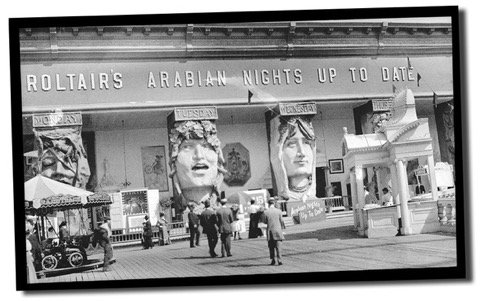| History of theming, from Coney Island to Disneyland….. |
Last month we completed our first chapter on the history of theming, talking about Luna Park in New York. Luna Park was on Coney Island, a strip of beach in Brooklyn that became the meeting point for the inhabitants of the populous and wealthy city of New York, who were eager for popular entertainment.
Already in 1901, F. Thompson, an architect dedicated to designing buildings for fairs and exhibitions, had developed the “Trip to the Moon” attraction on Coney Island. This attraction took visitors to the moon, amongst aisles of plaster scenery, lighting and characters. The idea of transporting visitors, literally, to another world, is clear.
Throughout the following decades, Coney Island blossomed with its three parks: Steeplechase Park, Dreamland and the park we know, Luna Park.
Steeplechase Park was for ordinary people. The elephant that appears in the photo below is a theming element example of this park.
Dreamland, on Coney Island, was intended for a public with greater income. In the photo we can see a theming example in the shape of grand sculptured elements.
Luna Park, presented in the previous Newsletter, combined the best of both parks. However, from 1915, cinema and automobiles took centre-stage in the Leisure industry and many amusement parks in the United States began to close. The Depression in 1929 finished off the great majority of parks. The succession of world wars did not allow the few parks that remained operational to update themselves and the public, as we know, periodically demand new things. We will have to wait until later, until the baby boom and post-war prosperous times to return to talking about theming and to finally start talking about Disney. But that will form part of the following chapter.
Regards!








